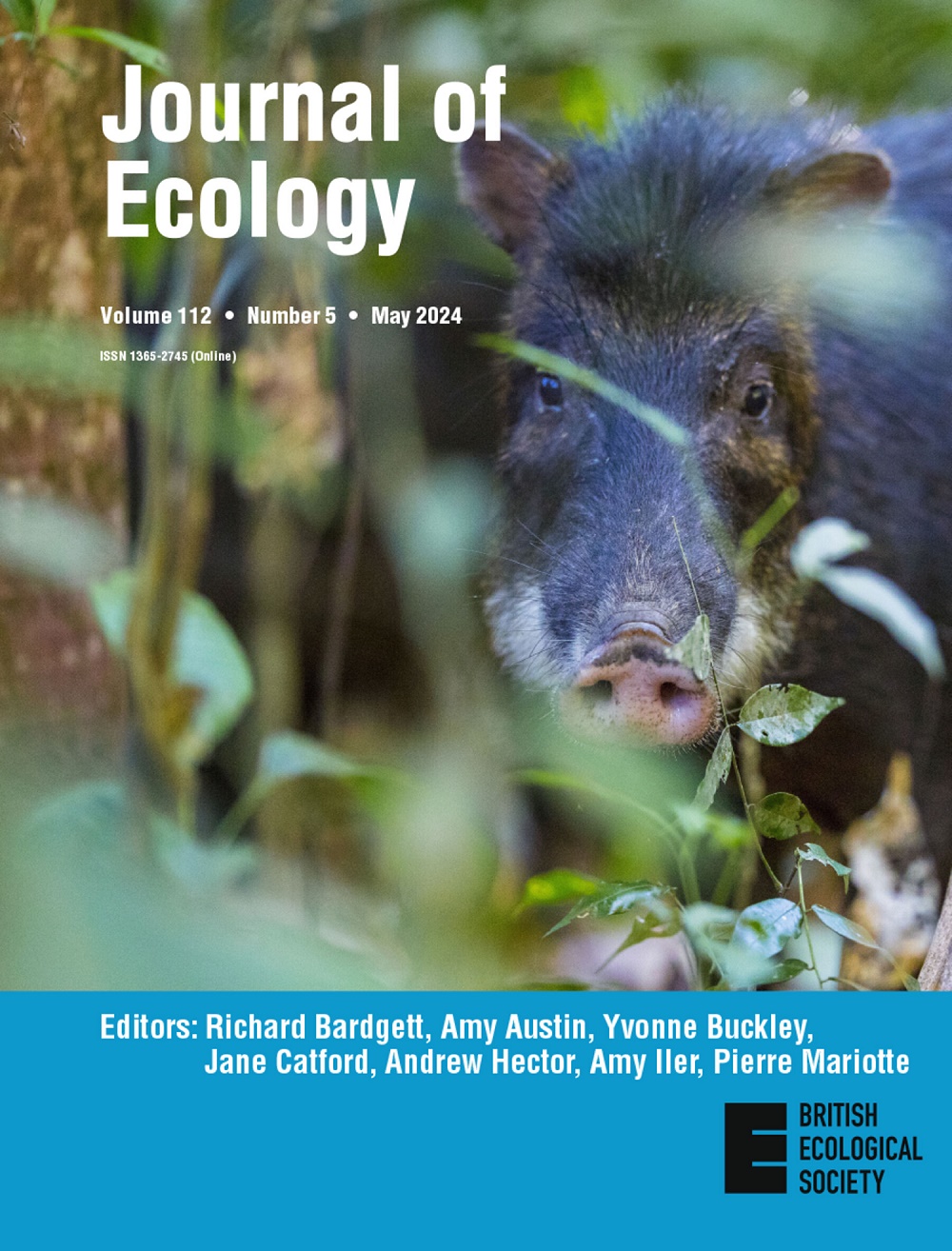Applying a unified framework to compare taxonomic, functional and phylogenetic diversity in Holocene pollen records
IF 5.6
1区 环境科学与生态学
Q1 ECOLOGY
引用次数: 0
Abstract




应用统一框架比较全新世花粉记录的分类、功能和系统发育多样性
生物多样性是多方面的,包括生物变异的分类、系统发育和功能维度。在一系列环境中比较这些维度的长期研究阐明了生态系统动力学和对环境变化的响应。最近开发的一种定量框架允许以相等的丰度敏感单位测量分类、系统发育和功能多样性,以便可以直接比较这三个维度的多样性。这个框架已经实现了alpha多样性(iNEXT.3D)和beta多样性(iNEXT.Beta3D)。我们将这一框架应用于花粉记录,这是长期生态变化的主要数据来源。据我们所知,这是首次将新框架应用于花粉记录。我们使用该框架来比较苏格兰北部林地范围和组成变化过程中的多样性维度,重点关注两个气候和植被历史截然不同的地点。这些记录记录了对约8000年气候和土地利用变化的响应。我们发现,尽管森林覆盖持续存在,但暴露较少的样地在分类、系统发育和功能多样性和组成方面表现出较大的变化,包括自1200 cal年BP以来所有维度的多样性下降。自7500 cal year BP以来,暴露地点在所有三个维度上都显示出更稳定的生物多样性。我们将这些不同的动态归因于暴露较少地点的生境异质性和暴露地点缓慢的生态过程(如泥炭扩展和树木更新失败)。结果表明:森林多样性对变化或持续覆盖的响应在多样性的三个维度上均存在差异,并且在稀有、丰富和优势类群之间也存在差异。通过传统的分类丰富度分析无法检测到这些响应。合成。在一个综合框架中评估长期多样性模式,可以直接比较分类、功能和系统发育多样性模式,并产生与生态系统管理潜在相关的见解。在多个维度上,尽管林地持续存在,但多样性和组成的变化是明显的,并且长期的特定地点生态过程强烈影响多样性动态。通过将该框架应用于花粉数据,并证明这可以深入了解长期多样性变化,我们的工作支持将该方法更广泛地应用于古生态记录。
本文章由计算机程序翻译,如有差异,请以英文原文为准。
求助全文
约1分钟内获得全文
求助全文
来源期刊

Journal of Ecology
环境科学-生态学
CiteScore
10.90
自引率
5.50%
发文量
207
审稿时长
3.0 months
期刊介绍:
Journal of Ecology publishes original research papers on all aspects of the ecology of plants (including algae), in both aquatic and terrestrial ecosystems. We do not publish papers concerned solely with cultivated plants and agricultural ecosystems. Studies of plant communities, populations or individual species are accepted, as well as studies of the interactions between plants and animals, fungi or bacteria, providing they focus on the ecology of the plants.
We aim to bring important work using any ecological approach (including molecular techniques) to a wide international audience and therefore only publish papers with strong and ecological messages that advance our understanding of ecological principles.
 求助内容:
求助内容: 应助结果提醒方式:
应助结果提醒方式:


